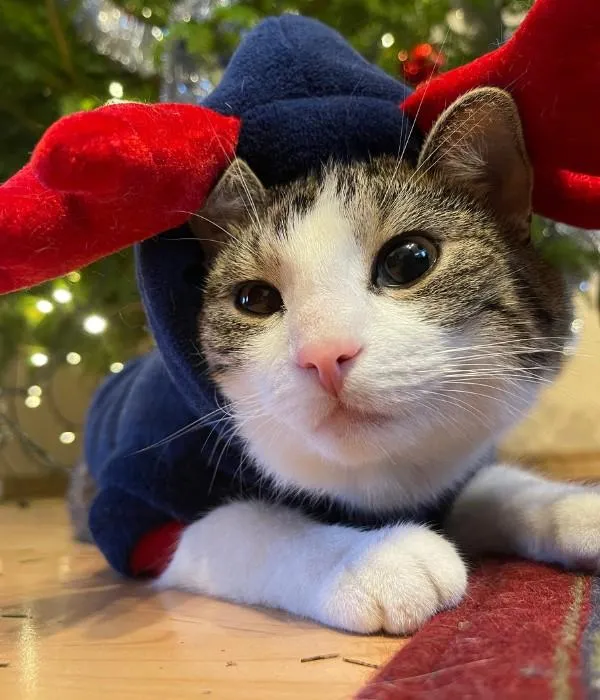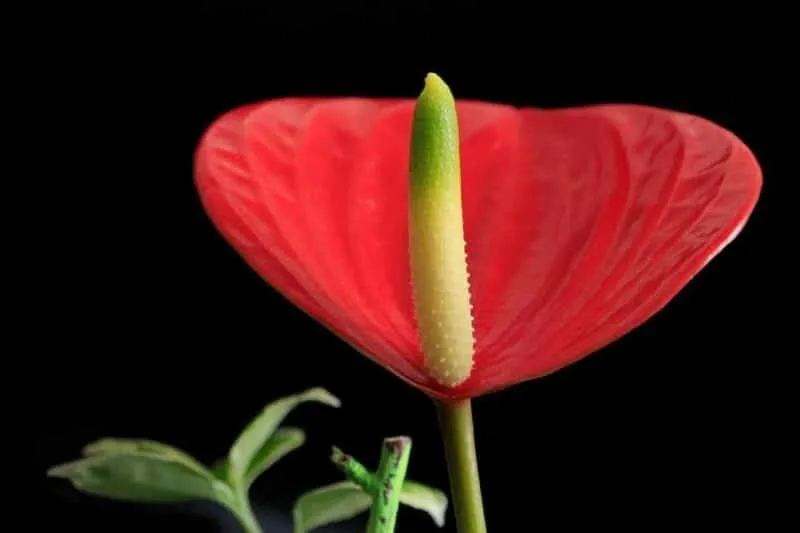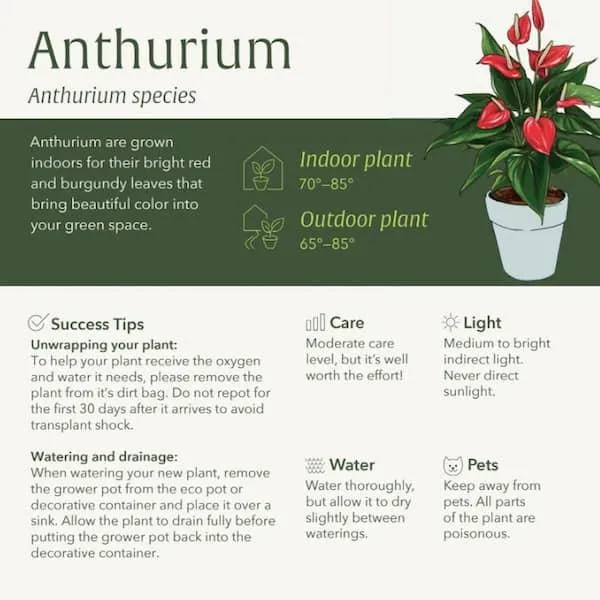Are Anthurium Plants Toxic to Cats?
If you have an indoor cat and are considering adding some foliage to your home with an anthurium plant, you may be wondering whether these stunning flowers are safe to have around feline friends. In this article, I will provide a comprehensive overview of anthurium toxicity for cats and answer all your questions so you can decide if this plant is a good fit for your cat-friendly space.
What is an Anthurium?
Anthurium is a popular houseplant genus known for its heart-shaped leaves and colorful wax-like flowers. Native to tropical regions of Central and South America, anthurium plants thrive in warm, humid indoor conditions. With their unusual bracts that resemble blooms, anthuriums come in a vibrant array of red, pink, orange and white shades. Their waxy, glossy foliage also adds attractive visual texture. These characteristics make anthurium a top choice for brightening up kitchens and bathrooms.
Are Anthurium Plants Toxic to Cats?
The short answer is that while anthurium flowers and leaves contain calcium oxalate crystals which can cause mild oral irritation in cats, real poisoning cases are quite rare. From my experience as a veterinarian, I’ve seen very few reports of cats experiencing problems after direct exposure to anthurium. However, it’s always better to take precautions with any plant that contains potential toxins.
Potential Effects of Ingestion
If a cat were to bite, chew or swallow parts of an anthurium plant, here are the possible effects based on reports:

- Mild oral irritation and inflammation from calcium oxalate crystals
- Drooling, excessive salivation
- Nausea, vomiting
- Diarrhea
- Potential blockages if large pieces are swallowed
In most cases, these symptoms are mild and temporary if the plant material is vomited or passes through the digestive tract. However, large ingestions could potentially lead to more serious issues like kidney damage in very rare cases.
Risk Factors for Cats
The risk of a cat experiencing problems from eating anthurium depends on several factors:
- Amount ingested – Small nibbles are unlikely to cause issues
- Cat’s size – Larger pieces pose more risks for smaller cats
- Overall health – Cats with pre-existing conditions may be more vulnerable
- Accessibility – Higher risks if plant is within easy reach of curious cats
Kittens and elderly or ill cats may fall into higher risk groups due to their small size or weaker immune systems.
Safety Measures for Cat Owners
While the chances of a cat encountering serious problems from an anthurium are slight, pet parents can take some basic precautions:

- Place plants up high, out of reach on shelving or hanging baskets
- Monitor new plant introductions closely at first in case of initial curiosity
- Consider potting anthuriums with stabilizing pebbles to prevent tipping
- Provide ample other non-toxic plants as safer chewing outlets
- Keep anthuriums out of rooms where cats spend most time
It’s also a good idea to familiarize yourself with plant toxicity basics and first aid measures in case of any suspected ingestions.
My Personal Experience
While working as a vet, I’ve owned several anthurium plants myself without issues. Basic care like keeping them well out of reach seemed to do the trick for my own three indoor cats. However, one client did bring in their kitten as a precaution after she gnawed on an anthurium leaf. We monitored her and she showed no symptoms after a few hours, but it served as a reminder that kits are much more accident-prone.
The Verdict on Anthurium Safety
In summary, while anthurium may cause minor oral irritation if eaten, real poisoning is rare in cats provided a few precautions are followed. As with any houseplants, it’s still best to childproof their location if small kittens or accident-prone pets are present. Most adult indoor cats can live happily with anthurium as a decorative element. But it’s always a good idea to keep toxic plants up high and introduce them slowly when bringing home a new cat.
I hope this overview has addressed all your safety concerns and provided plenty of real-world insights from my experience. Please feel free to contact me if you have any other questions about anthurium or plant toxicity in general for feline friends.

Factors to Consider When Choosing an Anthurium as a Houseplant
| Care Requirement | Water |
|---|---|
| Low | Water when the top 1-2 inches of soil are dry. Do not overwater. |
| Light | Temperature |
| Bright indirect light | 60-80°F ideal. Keep away from drafts and heat vents. |
| Soil | Fertilizer |
| Well-draining, organic potting mix | Feed monthly in spring and summer with diluted water-soluble fertilizer. |
| Pruning | Pests |
| Cut off spent blooms or prune to shape. Repot every 1-2 years. | Treat immediately for spider mites or mealybugs. |
FAQ
-
Is an anthurium safe for cats?
Anthuriums are kind of safe for cats, as long as the plant is non-toxic to pets. However, some parts of an anthurium like the leaves, flowers, stems and roots can potentially make a cat sick if eaten. So it’s best to keep anthuriums out of reach of curious cats.
-
What happens if a cat eats an anthurium?
If a cat chomps down on parts of an anthurium, it may cause some belly upset. The sap from anthurium can potentially irritate a cat’s mouth and digestion. Symptoms could involve vomiting, diarrhea or loss of appetite. Luckily the effects are seldom serious, but it’s still safer keeping your plant buddy away from feline friends.
-
Are anthuriums poisonous to dogs?
Similar to cats, anthuriums are generally not too awful for dogs to munch on. But dogs may experience some tummy trouble from eating the plant. The sap could potentially cause mild nausea or maybe even hiccups in rare cases. So for dogs as well, it’s best not giving them access to your nice decoration plant.
-
What parts of an anthurium should be avoided?
If you have curious pets in the house, the main parts of an anthurium to keep out of paws’ reach would be the leaves, flowers, stems, and of course the roots. These contain valuable plant juices and fibers that are perfectly healthy for the anthurium, but could potentially upset a dog or cat’s stomach. As the old saying goes, better safe than sorry!

In summary, while anthuriums themselves might not be overly hazardous, there could still be some risk if pets nibble on them. Perhaps you could quote Gertrude, an avid gardener and owner of three fluffy mutts, who said “It’s simply not worth the small chance of an upset tummy for my fur babies. Safety first is my approach with any houseplants.” So in fairness to our animal companions, it’s best displaying anthuriums somewhere out of their reach. Unless you want to take your chances – but is that fair to your furry friend?
